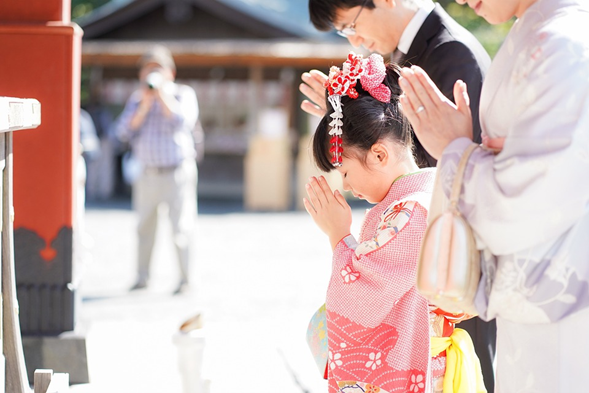
The autumn is already here and in Japan the shichi-go-san (七五三, which translates as “seven-five-three”) festival is celebrated on 15 November, as it is every year. The main characters of this celebration are boys aged 3 and 5, and girls aged 3 and 7 (hence the name seven-five-three), and they are taken to temples to give thanks for their good health and to pray for their continued good health during their development.
In the past, children were susceptible to a wide variety of diseases in Japan and the infant mortality rate was a serious problem, with many not making it to the age of 7. During the Heian period (794-1192), noble families began to perform these rituals in which they would go to Shinto temples and pray for their children’s health: with boys at ages 3 and 5, and with girls at ages 3 and 7. They did so in the belief that odd numbers bring good luck. Later samurai families joined in this tradition and then the rest of the population.
Children wear traditional Japanese dress for the first time during shichi-go-san. At the age of three, girls are taken to temples wearing beautiful kimonos tied with laces, and at the age of seven, they wear for the first time the obi, which is a wide cloth sash worn over the kimono. This is considered an important ritual, called obitoki (帯解き), and was once considered to be the girls’ passage into adulthood.
Boys are allowed to have long hair from age three, as they are used to having their hair cut very short before that age. This ritual is called kamioki (髪置き). At the age of 5, children wear haori jackets and are allowed to wear hakama trousers, which are a complement to traditional dress, to represent the passage from childhood to adulthood. This second ritual was named hakamagi (袴着). However, the meaning of the rituals has changed, but the habit of the dress has remained.
Certainly, traditional Japanese costumes are expensive, due to the complexity of their elaboration. That is why many companies allow you to rent these costumes for children and adults for this kind of festivities. Even photography studios offer a package of costume rental and a photo session at the temples for families. Some people have opted for this option, and the family portrait in traditional dress has practically become part of the tradition.
As part of this tradition, children are also given a colourful bag of chitoseame (千歳飴), which means “thousand-year candy”. It is a candy stick, the shape of which symbolises longevity. The candies are white and red (lucky colours) and it is considered that the number of candies to be given to children should correspond to their age. For example, a three-year-old child is given three sweets.
Although children’s health is no longer an issue in Japan, the tradition has been preserved for centuries as a joyful celebration representing parents’ wishes for their children to live a long, full and happy life.
